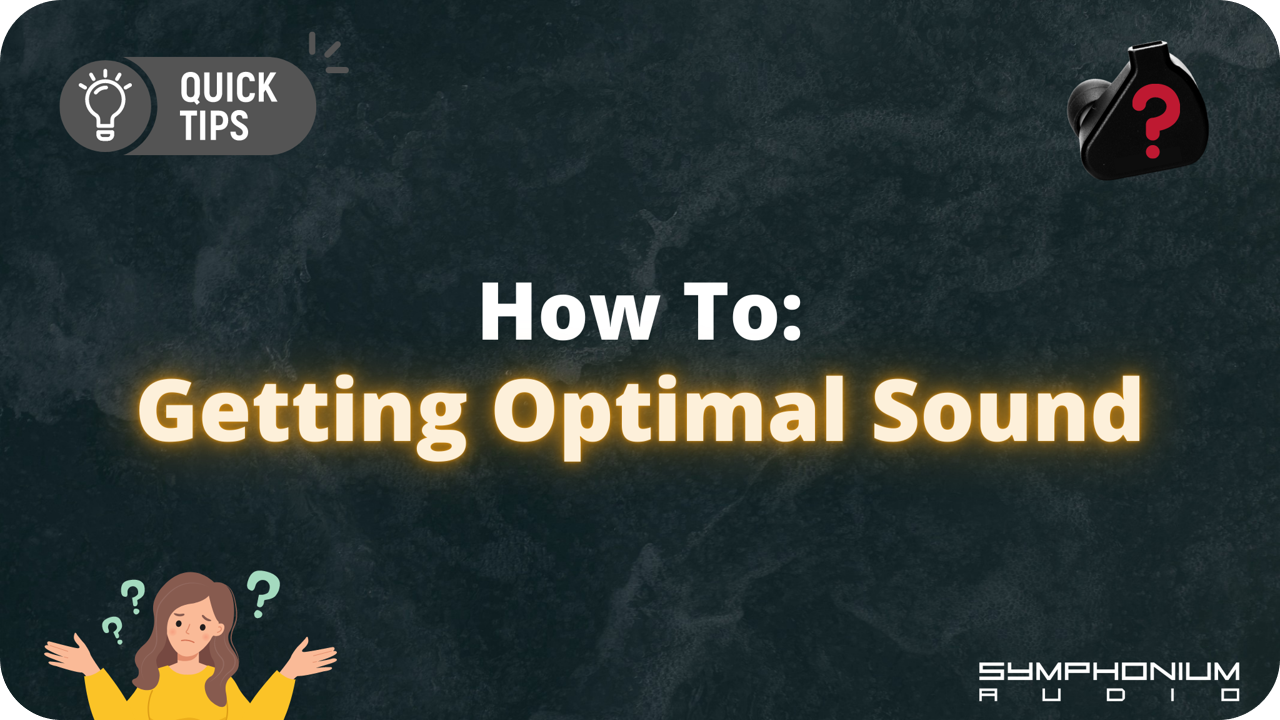We often get questions from listeners as to how they can optimise their listening experience, so we collated some tips here!
In any earphone design, obtaining a good fit will allow listeners to experience better sound quality. Poor earphone fit will lead to these issues:
- Lack of bass (especially sub-bass) due to poor coupling with the ear canal
- Physical discomfort as the IEMs are not properly secured in place in the ear
- Risk of the IEM falling out of your ears when you move around
That said, here are 3 ways to get the best sound with your Symphonium IEMs!
1. Insertion Depth and Fit
With a deep fit, a listener will hear treble more tamed; while with a shallow fit, a listener will hear treble as more aggressive and forward. Manufacturers will design the shell (and how deep it should optimally fit) based on the way they tune the IEM.
Some brands choose to design their earphones to fit shallower, while other brands may opt for a deeper fit. There is no wrong or right here! It depends on what the manufacturer sets out to do.
For example, shallow-fit IEMs tend to feel more comfortable at the expense of less security within the ear. Or, it could be that they just prefer tuning IEMs with a shallow fit!
At Symphonium, we design and account for our IEMs to be worn deep-fitted. This allows us to fit complex crossovers and proprietary acoustic designs within our shells. We also value the feeling of security as we move around, whether for walks or during commutes. Most importantly, we find that treble quality is enhanced with a deeper fit. Using our IEMs with a shallow fit will cause the treble to sound unintendedly forward and the IEM will also feel less secure within your ears.
So, how do you fit Symphonium IEMs in your ear? Here’s an easy 2 step process to ensure a deep and comfortable fit. This works for most IEMs:
 Note: Perform these steps gently so that you do not irritate your ear canal.
Note: Perform these steps gently so that you do not irritate your ear canal.
Make sure that you have the best possible seal with your ear-tips as this will greatly affect bass in any IEM. You should perceive environmental noises around you as muffled (without any music playing). At the same time, however, ensure that the ear-tip is not too big to cause pressure build-up within your ear.
This is by far the most difficult step with any IEM. You should have an arsenal of different ear-tip sizes to experiment with as our canals can be uneven in size or odd in shape - some listeners may even require different ear-tip sizes for their left and right side IEMs.

3. Try a Variety of Different Ear-Tip Designs
We tune our IEMs with wider-bore ear-tips for a smooth, whilst extended treble response.
However, that does not mean our IEMs do not synergise well with narrow-bore ear-tips. We’ve received feedback from some of our customers indicating that they prefer the sound of our IEMs with narrow-bore ear-tips!
Here’s a list of ear-tips you can consider should you want to build a collection:

These tips and tricks seem easy and rudimentary but in practice, are rather tough and require some experience to get the fit and seal right. Always try a variety of sizes of ear-tips and different ear-tip designs with any IEM - it is so important in squeezing out that very last bit of sound quality.
Should you have any inquiries please reach out to us at info@symphoniumaudio.com




Leave a comment
All comments are moderated before being published.
This site is protected by hCaptcha and the hCaptcha Privacy Policy and Terms of Service apply.